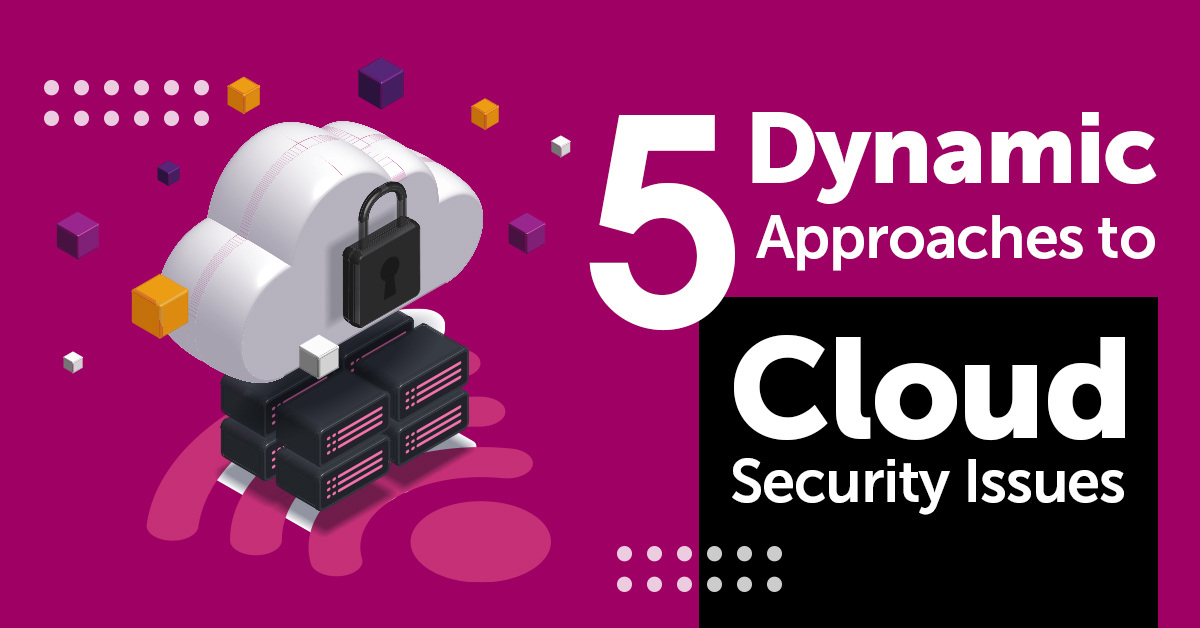Cloud computing has significantly transformed business operations, enabling adaptable infrastructure, storage, and software solutions. The transition to cloud-based technology has also introduced specific cloud data security issues. A Verizon report suggests a 13% increase in ransomware attacks in 2023.
Increasing cyberattacks require extensive security measures to ensure cloud data protection. What makes cloud security a significant challenge is the lack of expertise across organizations. Transitioning from on-site infrastructure to cloud-based architecture requires planned migrations and security measures.
This ensures reduced data loss and protection while you migrate to the cloud. However, organizations often lack experience in migration, causing data leaks and security bottlenecks. Safely migrating data to the cloud is not the only issue; it must be secured once it’s there.
This article will focus on different challenges and best practices to solve data privacy and security issues in cloud computing.
What is cloud data security?
Cloud data security helps protect data that is stored, processed, and transmitted through cloud computing services. This is essential to maintain sensitive information confidentiality, integrity, and availability.
Implementing security controls and best practices is crucial to reduce data security issues in cloud computing. Security best practices such as encryptions, access controls, intrusion detection, and prevention (IDP) can help secure cloud data.
Data protection in the cloud environment can be daunting, but you can avoid cybersecurity threats with proper security measures. However, which security measure you deploy for your systems depends on the challenges and vital security threats you face.
Key cloud security challenges
Migrating to and operating in the cloud environment can pose several security challenges for organizations. Some of the challenges significant to data security issues in cloud computing are:
● Data breaches: Security breaches in the cloud can happen due to weak access controls, misconfigured systems, insider threats, and vulnerabilities.
● Lack of visibility and control: Organizations can face difficulties managing security controls in a cloud environment that spans multiple locations.
● Shared responsibility: Cloud service providers provide infrastructure and security controls, but the organization must ensure the security of their data and applications within the cloud.
● Third-party risk: When third-party vendors and partners are given access to an organization’s cloud data and infrastructure, there is a potential for security risks.

Cloud security threats you need to handle for data protection
Cloud computing data security issues compromise the integrity of data stored or transmitted over the internet. To ensure protection, you must address common security threats in cloud computing, including:
#1. Data leaks
It is essential to be aware of the risks of data leaks, as they create data storage security issues in cloud computing. Hackers access sensitive information by using unsecured network connections, weak passwords, and backdoor vulnerabilities.
This can affect business data like trade secrets, strategic plans, and personal contracts. The consequences of a data leak include reputational damage, legal consequences, and financial losses.
#2. Malware attacks
Malware attacks are malicious programs that hackers use to steal sensitive information. Cloud systems are often integrated into different systems for enhanced functionalities. Such integrations can lead to malicious code injections and malware attacks without proper protections.
Another way attackers can execute malware attacks on cloud infrastructure is through backdoor vulnerabilities of an end-point interface.
#3. Network vulnerabilities
Network vulnerabilities are flaws in the computer network, which allow attackers to inject malicious programs and corrupt the system. It also provides unauthorized access to sensitive information to hackers, which causes cloud data storage security issues.
These vulnerabilities can be misconfigured network devices, outdated firmware or software, weak passwords, lack of encryption, or even human error.
#4. Insider threats
In cloud computing, an insider threat is when a person with authorized access to the system within an organization poses a potential risk. These individuals have detailed knowledge of the system and can exploit its weaknesses.
Insider threats can be accidental, such as unintentionally exposing sensitive data, or malicious, resulting in theft or espionage by disgruntled employees. Another way attackers execute such attacks is by using social engineering practices. Hackers send links through emails to employees with access which influences them to click them, leading to malicious injections.
#5. Distributed Denial-of-service (DDoS) attacks
DDoS attacks can disrupt a website’s traffic, making it temporarily or permanently unavailable. It consumes all the available cloud resources of a targeted network or server.
Such attacks can disrupt normal traffic of a targeted server by overwhelming the traffic. A report from Microsoft suggests that Azure cloud services experienced the highest DDOS attacks in 2021, which was up to 3.47 TBPS.

Best Practices for cloud security
Here are some best practices for cloud security to help you protect your data:
#1. Use encryption
A practical approach to handling cloud computing data security issues is encryptions. Organizations can use encryption to secure communication between browsers and cloud servers. It reduces the chances of man-in-the-middle, DDOS, and other such attacks.
Organizations use SSL certificates to encrypt data and secure communications between systems. There are different types of certificates offered by reputed SSL brands like RapidSSL certificate, Thawte SSL certificate, and so on. Choosing the right one is important for better cloud security.
For example, if there is a single domain, a standard SSL certificate is the best option. However, you need a cheap wildcard SSL certificate if you have multiple subdomains.
#2. Leverage an identity and access management (IAM) solution.
Deploying IAM helps reduce data security issues with cloud computing through enhanced information access control. You can use IAM to manage and control user access, enforce security policies, and monitor resources. This is an effective way to reduce security incidents such as unauthorized access and data leaks.
#3. Establish and enforce cloud security policies.
Cloud security policies that outline the acceptable use of resources and procedures for handling security incidents are crucial. This will ensure secure data access and reduce data security issues in cloud computing.
Before designing security policies, you need to ensure that roles and responsibilities within the organization are well defined. Further, you can also employ the Role-based Access (RBAC) policy for enhanced cloud security.
#4. Deploy intrusion detection and prevention (IDP) technology.
Implementing intrusion detection and prevention (IDP) technology helps reduce data privacy and security issues in cloud computing. Choose a robust IDP solution to detect a wide range of cybersecurity threats and ensure maximum data security.
This technology is critical for cloud security as it can help detect and block potential cyber threats from compromising data.
#5. Double-check your compliance requirements.
Businesses must adhere to appropriate regulations like HIPAA, GDPR, and PCI DSS. This will ensure that your cloud security measures align with the required standards.
Further, it also ensures you fully comply with the data protection guidelines.
Conclusion
Increased cloud security data issues need practical solutions and a well-planned framework. Some cloud services providers, like AWS, Google Cloud, and Azure, provide specific security frameworks.
You need to have security planning and measures deployed according to your business-specific needs. We have discussed vital challenges, threats, and best practices that you can use to secure your cloud-based systems. Choose the one that suits your project and start securing cloud data.










